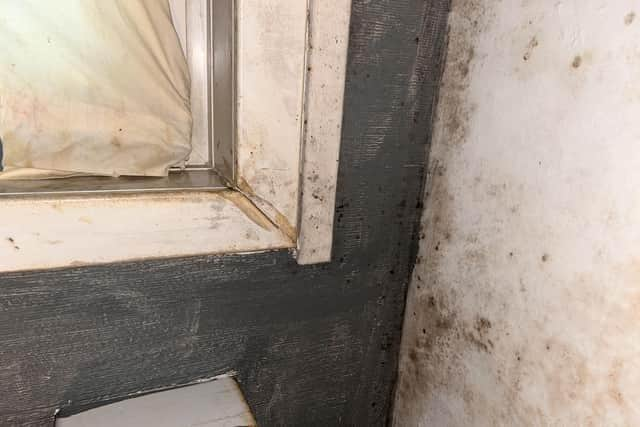Edinburgh housing: Reports of damp and mould in city homes increase by 895 per cent
and live on Freeview channel 276
The number of people who have reported living with damp and mould in Edinburgh has shot up by 895 per cent, it has been revealed.
Figures released under freedom of information powers show that cases of dampness in social rented homes which the council responded to has increased from 122 in 2019 up to 1,215 in 2022 – almost ten times the number of homes in three years. It comes after tenants in West Pilton dumped mouldy belongings outside Edinburgh Council offices in protest over the mouldy, damp conditions of their homes.
Advertisement
Hide AdAdvertisement
Hide AdMiles Briggs, Lothian MSP, said that the level of damp and mould in Edinburgh homes is ‘unacceptable’ and has called for urgent action to tackle the growing problem. He said: “The extent of damp and mould in Edinburgh’s socially rented homes is unacceptable with the number of households reporting damp and mould increasing ten fold in ten years.


“I have received regular case work about issues with damp and mould in their properties and the impact this has on their health. We urgently need to see improvements in the quality of socially rented homes and with proper repairs being made when mould is reported. The number of homes with damp and mould has been on the rise despite repeated warnings. SNP and Green Ministers must find an Edinburgh specific solution.”
Local MP Christine Jardine has also called on the UK and Scottish governments to provide “specific funding” to allow councils to tackle mould and damp in social housing following the coroner’s ruling that two-year-old Awaab Ishak died due to exposure to mould in his home in Rochdale in 2020. Both governments have said spending decisions are a matter for councils.
Edinburgh council pledged to put in place an effective mould and damp strategy from June 2021. Since then, a dampness survey has been used to investigate all reports of damp and mould which are submitted to the council. Before that, a dampness survey wasn’t carried out for every report of dampness.
Advertisement
Hide AdAdvertisement
Hide AdBut last year the council admitted to failures in dealing with poor living conditions after an investigation found tenants in high-rise flats had been left waiting up to five years for mould-ridden homes to be fixed.
Councillor Jane Meagher, housing, homelessness and fair work convener, said: “No one should have to suffer through issues like this in their home and damp and mould are serious problems we’re working to address. We’ve improved the way we record and respond to damp and these figures reflect our decision in 2021 to reply to every incident of damp with a survey.
“A unique problem for Edinburgh is that many of our older council homes are now at an age where they need significant upgrades. We recently announced a major programme of investment to address this and we’re one of the first local authorities in Scotland to pilot a ‘whole house retrofit’ approach to council homes. We will be fully adopting this over the next 12 months and, longer term, this work should help with ongoing issues of damp and lower fuel costs.”
Comment Guidelines
National World encourages reader discussion on our stories. User feedback, insights and back-and-forth exchanges add a rich layer of context to reporting. Please review our Community Guidelines before commenting.